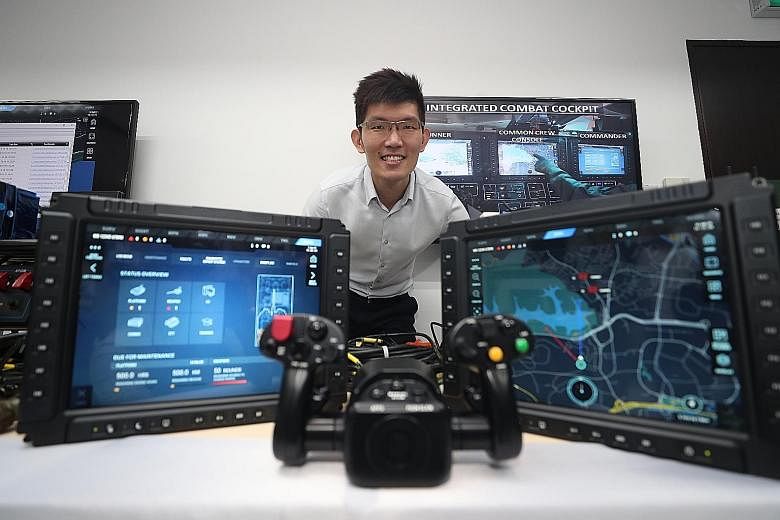Like a brain that is constantly learning new skills, the Singapore Army's latest Hunter Armoured Fighting Vehicle (AFV) is able to adopt new capabilities using apps.
The Hunter, which is powered by the Army Tactical Engagement and Information System (Artemis), allows soldiers to contribute apps to a specially developed Artemis App Store.
The AFV will also be able to integrate with unmanned platforms in future, to gather reconnaissance and surveillance information.
These are some examples of the Hunter's open and modular technological design, and these features ensure that the AFV can remain relevant even in the face of evolving technologies, said Mr William Peh, 34, programme director at the Defence Science and Technology Agency's (DSTA) Land Systems Programme Centre.
"This is essential, as military platforms are expected to last 30 years with multiple upgrade cycles," said Mr Peh. He and the team from DSTA, the army and ST Engineering were recognised at the Defence Technology Prize ceremony last Friday for their engineering achievements in developing the Hunter AFV.
In an earlier interview with the media, Mr Peh said that the fully digitalised AFV, which was commissioned in June and made its first public appearance at the National Day Parade in August, also allows its crew members to go paperless.
Instead of having to file fault reports and vehicle logs manually, crew members will find that such data is automatically logged into an on-board health and utilisation monitoring system.
This will allow them to identify and troubleshoot faults within seconds in a process that would have taken hours in the past, said Mr Peh.
The data collected can also be used to analyse vehicular fault trends, and enable condition-based and predictive maintenance, which will lower maintenance costs.
The team took steps to keep costs down by ensuring that costly parts used in the previous generation of AFVs were not replicated in the Hunter. These included parts that were used in the suspension system, for example.
This means the cost of maintaining the Hunter is expected to be reduced by about 40 per cent, said Mr Peh.
Cost efficiency was another consideration during the development of the Hunter, leading the team to set up a systems integration laboratory for testing purposes.
"Traditionally, to integrate and test systems, we used to do multiple field trials which were costly and time-consuming," said Mr Peh, adding that using the lab allowed the team to deliver the Hunter ahead of schedule.
The team also developed an augmented-reality training programme for the maintenance of the Hunter that would enable self-directed learning with fewer instructors. A pilot programme is expected to be in operation next year.
Mr Peh said the development of the Hunter would not have been possible without the efforts and expertise of "many past and present defence engineers" and the partnership between the army, DSTA and ST Engineering.
"This was a journey that took us slightly more than a decade from conceptualisation to delivery. We owe it to our alumni who laid the foundations for this programme," he added.


